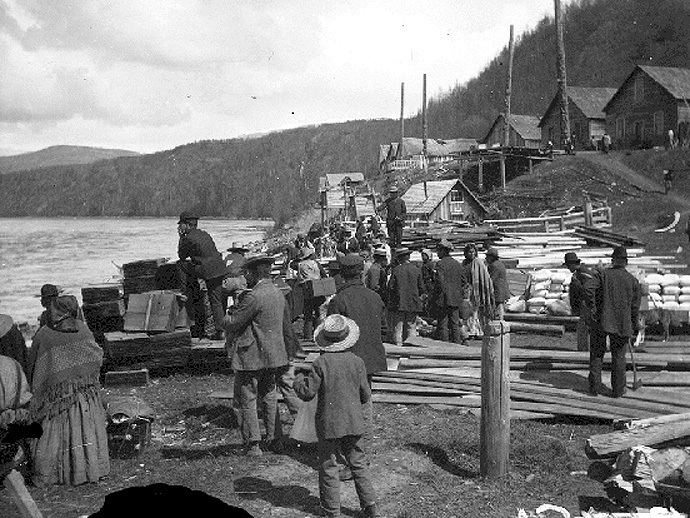 | ||
Gitxsan (also spelled Gitksan) are an indigenous people of Canada whose home territory comprises most of the area known as the Skeena Country in English (Git: means "people of" and Xsan: means "the River of Mist"). Gitksan territory encompasses approximately 53,000 square kilometres (20,000 sq mi) of land, from the basin of the upper Skeena River from about Legate Creek to the Skeena's headwaters and its surrounding tributaries. Part of the Tsimshianic language group, their culture is considered to be part of the civilization of the Pacific Northwest Coast, although their territory lies in the Interior rather than on the Coast. They were at one time also known as the Interior Tsimshian, a term which also included the Nisga'a, the Gitxsan's neighbours to the north. Their neighbours to the west are the Tsimshian (a.k.a. the Coast Tsimshian) while to the east the Wet'suwet'en, an Athapaskan people, with whom they have a long and deep relationship and shared political and cultural community.
Contents
Society and culture
Gitxsan are a matrilineal society that consists of Frog, Eagle, Wolf, and Fireweed Clans. Each clan consists of a series of independent Houses (Wilp), each with their own High Chief, and traditional territories and fishing sites. Marriage within a clan is forbidden.
There are approximately 5,000 British Columbia wide with many living in traditional Gitxsan territory. Many also live elsewhere in British Columbia, in places such as Terrace, Smithers, and in Vancouver, as well as around the world.
Eighty per cent of the people living on the lands surrounding Legate creek to the Skeena headwaters are Gitxsan ('People of the River Mist') and archaeological evidence supports a continuous habitation of at least 10,000 years. Their traditional language is called Gitxsanimaax.
A museum known as 'Ksan displaying some traditional and modern Gitksan art and history is located on the Gitanmaax reserve near Hazelton.
Title and treaties
The aboriginal title rights of the Gitxsan and their neighbours, the Wet'suwet'en, were affirmed by the Supreme Court of Canada in its 1997 Delgamuukw decision.
To date, a treaty agreement between the Gitxsan Nation and the Federal Government of Canada and Provincial Government of British Columbia has not been reached.
Communities
Some of the Gitxsan (Gitksan) villages are, divided by dialect:
Gitxsan dialect or Gitxsanimax̱, also known as Eastern Gitxsan dialect speaking bands in Gigeenix (eastern region):
Gitsken dialect or Gitsenimx̱ , also known as Western Gitksan dialect speaking bands in Gyeets (western region):
